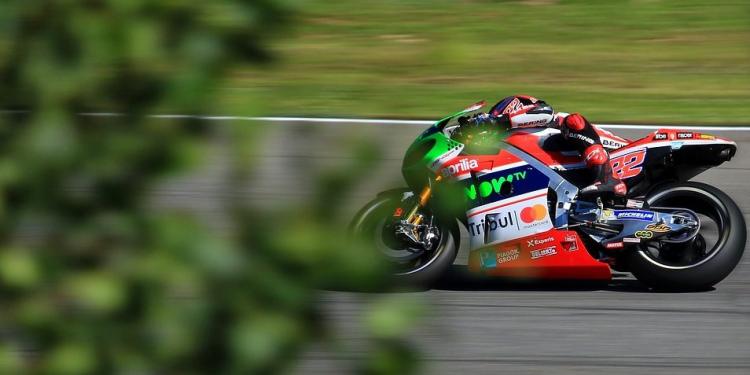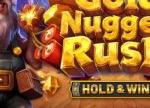The History of the Isle of Man TT
Posted: January 22, 2020
Updated: January 23, 2020
-
The TT started in 1907
-
The race is open to anyone with a race license
-
There have been a lot of fatalities

The history of the Isle of Man TT starts in 1907. It’s a motorcycle race has taken place on the public roads. It’s name is the Tourist Trophy or “TT” for short. Many people say that it’s the most dangerous race in the world.
Introduction: The History of the Isle of Man TT
The races are take part on a time-trail basis ie racing against the clock. The event itself is one week of practice sessions and then one week of actual racing. Between practice and race weeks, there’s a tradition whereby members of the public can informally tour the Snaefell Mountain Course on motorcycles on “Mad Sunday”.
The Isle of Man
Sitting in the Irish Sea, 191 miles off the UK coast, the Isle of Man is an island measuring around 220 square miles. It’s a British Crown dependency meaning that it doesn’t belong to the UK, but governs itself. The Queen is still the head of State. The island possesses a beautiful rugged coast line, with mountains rising up in the center. There’s a large heritage from the Celts to the Vikings. The Capital is the town of Douglas. Between May and June each year, various roads are inaccessable as the TT trials and races begin, using public roads across the island.

History Isle of Man TT: The First Race
The very first motor car race on the island was in 1904. This was the Gordon Bennett Eliminating Trial and was just for touring vehicles. A year later, the first Isle of Man Tourist Trophy Race for racing automobiles took place. It’s new name was the RAC Tourist Trophy. As the public roads were already shut off for the car races, it was decided to have motorcycle races afterwards. These were the International Motor-Cycle Cup Races. Then in 1907, we saw the creation of a new racing format.
International Auto-Cycle Tourist Trophy
Known as the International Auto-Cycle Tourist Trophy, the first race was on May 28th 1907. It was 10 laps around the Isle of Man St John’s Short Course of 15 miles 1,470 yards. It was for ” road-legal ‘touring’ motorcycles with exhaust silencers, saddles, pedals and mudguards” and the planning was by the local Auto-Cycle Club. After 1911, the race moved to the longer Snaefell Mountain course, which is 37.40 miles (60.19 km).
History Isle of Man TT: More Races
In 1911, the race program made bigger, going from a single race with two classes to two two individual races for the 350cc Junior TT motor-cycles. Another race was created, called the Blue Riband event, and this was open to 500cc bikes. Between 1915 and 1919 all racing stopped due to the war. Racing resumed in 1920. A new race was added in 1922, a250cc Lightweight TT race. Then 1923 saw the addition of a Sidecar TT race.
After the Second World War
Racing again stopped during the duration of the Second World War. Racing started again, but with two races: the Manx Grand Prix in 1946 and the Isle of Man TT in 1947. The whole racing format was made larger. It now included a new Clubman’s TT race. Between 1949 to 1976, the course became part of the British round of the FIM Motor-cycle Grand Prix World Championship (now MotoGP). Unfortunately there were problems with starting monies and with the safety of the course itself. Because of this, the races were boycotted by both riders and manufacturers during the 1970’s.

Isle of Man TT Festival
Due to safety concerns, in 1976, the Isle of Man TT lost its World Championship status. Then the Isle of Man TT Races became an important part of the new style TT Formula 1, Formula 2 and Formula 3 World Championships taking place between 1977 and 1990. Since 1989, the Isle of Man Department of Tourism have been busy promoting the Isle of Man TT Festival. Online sports book news in the UK pointed out that this includes a number of new events including including the Pre-TT Classic Races in 1989 followed by the Post-TT Races from 1991, both held on the Billown Circuit. There are a mind boggling number of classes. You can bet with Bet356 from Superbike to Supersport and from Superstock to Sidecar.
The Classic TT
Then in 2013, the Isle of Man Classic TT came into being thanks to the Isle of Man Department of Economic Development and the Auto-Cycle Union for historic racing motorcycles. In 2003, Sports Illustrated writer Franz Lidz called the spectacle “38 Miles of Terror… a test of nerves and speed that may be sport’s most dangerous event.” Today the local government have been instrumental in forming and promoting the ‘Isle of Man Festival of Motorcycling’ which takes place in late August of each year.
Eligibility
- Entrants must be in possession of a valid National Entrants or FIM Sponsors Licence for Road Racing.
- Entrants must cite pre-filled documentation of completion of a UK drivers licence or motorcycle certification or a drivers licence from a comparable country that is recognized by UK comparable department of transportation standards and may withhold due to any pre race or post race suspensions.

Race Schedule 2020
Check out these dates for placing you bets using one of these online sports books sites in the UK. The current format is that race competitors will be “started singly at 10-second intervals”. For the 2020 Isle of Man TT races there are four race days:
Saturday 6 June:
- 12:00 Superbike TT Race, 6 laps (236.38 mi or 380.42 km)
- 15:00 Sidecar TT Race 1, 3 laps (113.00 mi or 181.86 km)
Monday 8 June:
- 11:45 Supersport TT Race 1, 4 laps (150.92 mi or 242.88 km)
- 14:45 Superstock TT Race, 4 laps (150.92 mi or 242.88 km)
Wednesday 10 June:
- 10:30 Lightweight TT Race, 3 laps (113.00 mi or 181.86 km)
- 11:45 Supersport TT Race 2, 4 laps (150.92 mi or 242.88 km)
Friday 12 June:
- 14:45 Sidecar TT Race 2, 3 laps (113.00 mi or 181.86 km)
- 12:45 Senior TT Race, 6 laps (236.38 mi or 380.42 km
Check the odds with Bet356.
TT Deaths
Thanks to a striking “death” rate, the Isle of Man TT is regarded as the world’s deadliest motor sport event. Of the riders, 146 have lost their lives since the race’s inception in 1907. But the number shoots up alarmingly to over 250, when you include spectators. After an incident in 2007 in which a rider died, the local coroner commented at the inquest. ‘Senior Marshals may well have been elevated beyond the sphere of their competence’. He went on to note, “I am more than aware of the fact that the marshals are all volunteers. They give their time freely and without paid reward. Having said that however, if it were suggested because they were volunteers there should be some allowance in the standards expected of them.”
More information: http://www.iomtt.com/











